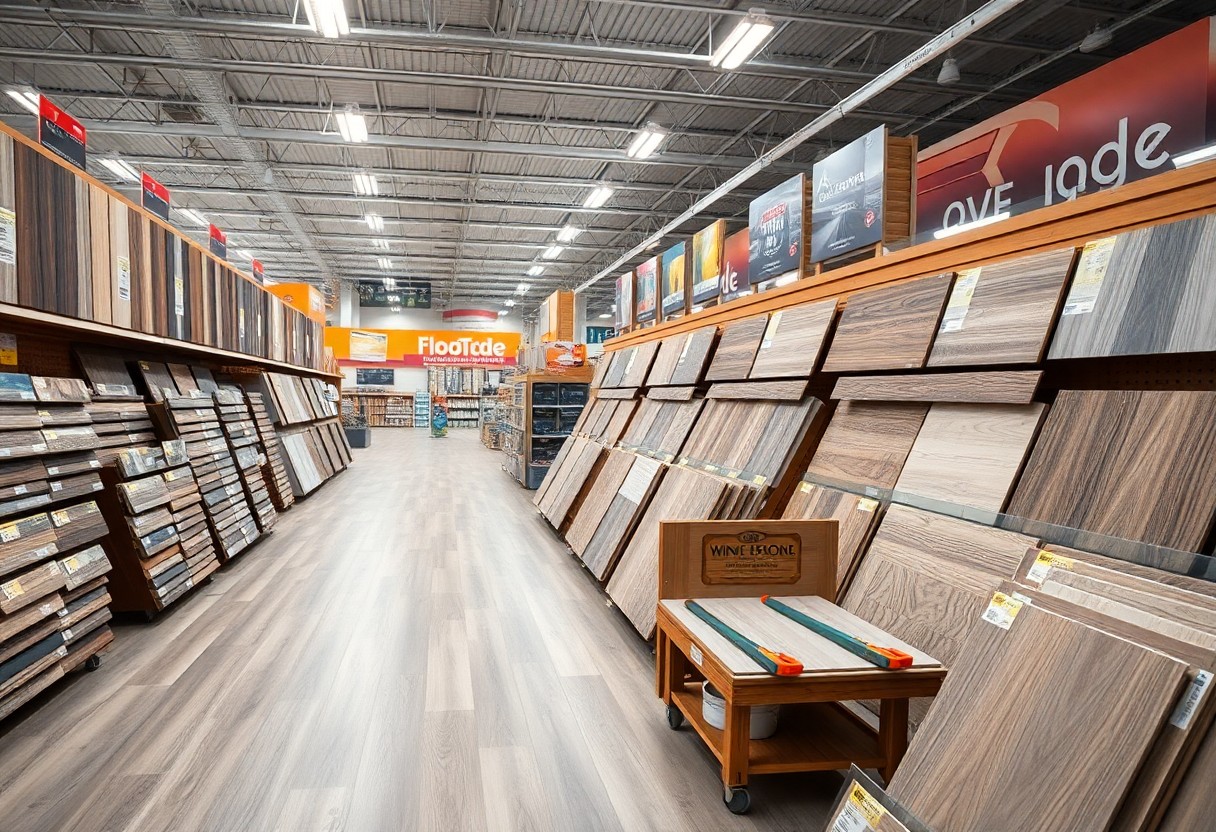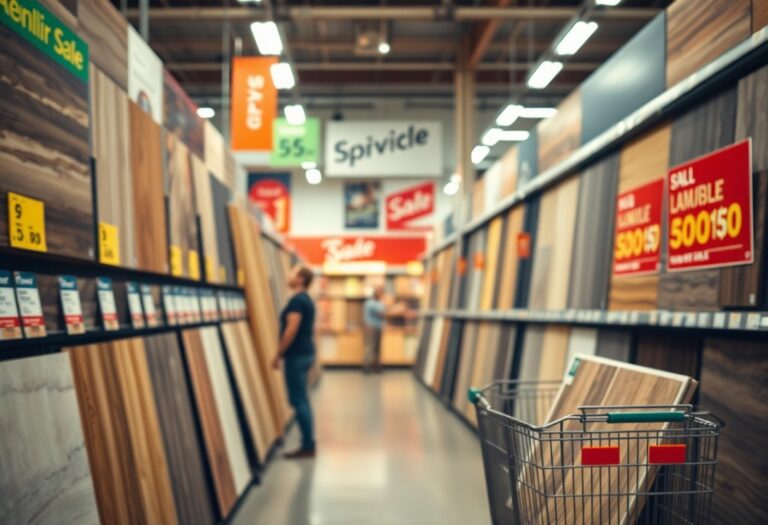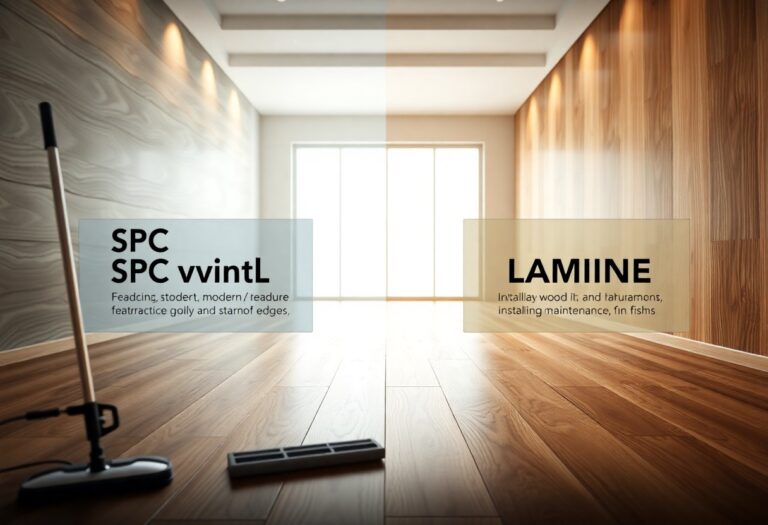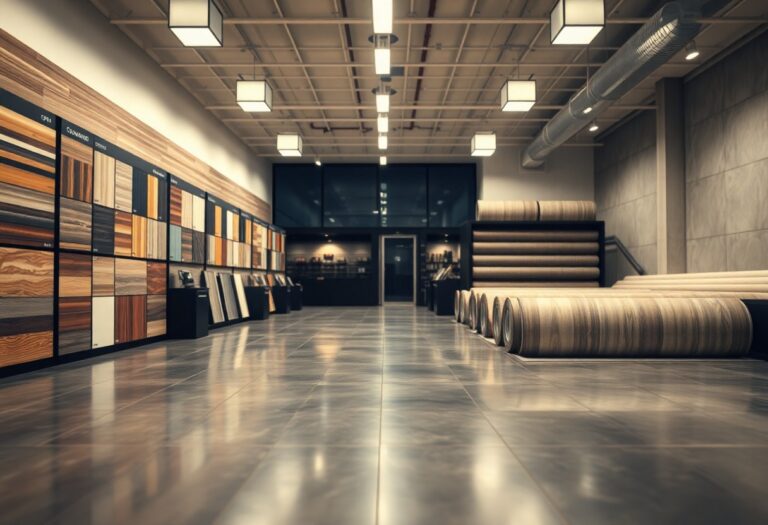There’s a lot to consider when you’re preparing to purchase vinyl flooring on sale, and making the right choice can greatly enhance your space. From understanding different types of vinyl to knowing how to properly assess your needs, this guide will walk you through the most important factors to consider. Whether you’re renovating your home or updating a rental property, you’ll find practical tips and insights to help you make an informed decision that fits your style and budget.
The Financial Implications of Vinyl Flooring Choices
Choosing vinyl flooring isn’t just about aesthetics; it’s a financial decision that can impact your wallet for years to come. Initial costs, maintenance, and longevity all play into the overall financial picture. You’ll want to weigh the upfront price against potential repairs or replacements down the line. Factors such as the quality of the material, installation expenses, and your intended use for the space can further influence your investment in vinyl flooring. Understanding these facets will empower you to make a choice that meets both your budget and your needs.
Cost-Benefit Analysis of Vinyl vs. Other Flooring Options
Vinyl flooring generally provides an impressive balance of affordability and durability when compared to options like hardwood or tile. While the initial cost of hardwood can range from $8 to $15 per square foot plus installation, luxury vinyl planks often hover around $3 to $7, making them a wallet-friendly alternative. Additionally, vinyl’s ease of installation can save you money on labor costs, allowing you to maximize your flooring budget without compromising on quality.
Understanding Long-Term Investment vs. Short-Term Savings
A long-term investment in high-quality vinyl can save you money in the long haul, reducing the need for replacement and repairs. While cheaper vinyl options might seem appealing up front, they can wear out faster, ultimately costing you more when you need to replace them sooner. Analyzing your lifestyle and usage will guide you toward the best choice that balances initial expenditure with longevity and performance.
Acknowledging the difference between a long-term investment and short-term savings can significantly affect your flooring decision. For instance, top-tier vinyl may come with a higher price tag initially, but its durability and resistance to wear and tear can result in lower maintenance costs and a longer lifespan. On the flip side, opting for inexpensive vinyl might lead to frequent replacements, resulting in higher cumulative costs. Evaluating your specific needs—such as household activity, pets, and aesthetics—can illuminate whether you should prioritize quality over price in the quest for flooring that stands the test of time.
Assessing Quality: What to Look For Before You Buy
Evaluating the quality of vinyl flooring will pay off in the long run, allowing you to make a worthwhile investment. Begin by examining the material composition, ensuring it’s crafted from high-grade vinyl, which will greatly influence the durability and performance of your flooring. Additionally, check the warranty offered by the manufacturer, as longer warranties often indicate greater confidence in product longevity and quality. Understanding the installation method is also vital, as it affects not only the ease of your project but also how well the flooring will wear over time.
Identifying Durable Materials and Construction Techniques
Look for products made with 100% virgin vinyl, which typically offers superior durability compared to recycled options. The construction technique also matters; multilayer flooring can enhance resilience against wear and tear while ensuring stability. You can gauge quality by inspecting the flooring’s surface texture and visual appeal; a well-constructed product often has a more realistic wood or stone look. Always opt for products that have been tested for resistance to both moisture and heavy foot traffic to ensure they meet your daily needs.
The Importance of Thickness and Wear Layers
Thickness directly influences the comfort, insulation, and longevity of your vinyl flooring. Typically, residential vinyl flooring should have a thickness of 4mm to 8mm, while commercial options may exceed this. The wear layer—a clear top coating—protects against scratches, stains, and fading. A wear layer of at least 12 mils is advisable for residential areas, whereas heavier-duty areas might benefit from 20 mils or more, ensuring optimal performance and resilience against everyday challenges.
Investing in a thicker wear layer typically informs how well your vinyl flooring will stand up to the rigors of life in busy spaces, from children playing to pets roaming. A floor with a 20 mil wear layer can offer up to 15 years of protection in residential settings, while a 12 mil layer might suffice for lower-traffic areas. Opting for materials with robust thickness and higher wear layers not only enhances durability but also adds value to your flooring over time, allowing for peace of mind in your purchase decision.
Navigating Styles and Aesthetics without Sacrificing Functionality
Selecting vinyl flooring often involves balancing style with practicality to achieve the perfect atmosphere in your space. You can enjoy a multitude of design options, from sleek modern aesthetics to rustic, farmhouse vibes, without compromising durability or maintenance. Your choice should reflect your personal taste while also catering to the specific needs of each room, such as moisture resistance in bathrooms or scratch protection in high-traffic areas.
Popular Design Trends and Their Practical Applications
Current design trends include wood-look vinyl planks that deliver the charm of natural timber while providing water-resistance and easy cleaning advantages. Also, tile-effect vinyl creates an authentic ceramic tile appearance, great for kitchens and bathrooms, where style meets crucial functionality. These options cater to various aesthetic preferences and significantly enhance your living spaces.
How Color and Pattern Can Influence Room Dynamics
The impact of color and pattern on a room’s ambiance cannot be overstated. Light colors can make a space appear larger and more airy, while darker shades can add intimacy. Patterns can create focal points or subtly enhance your decor, depending on their scale and distribution. For instance, large, bold patterns might draw attention in open areas, while smaller, intricate designs can add character to cozy corners, thus guiding the flow and feel of the environment.
Choosing the right colors and patterns can indeed transform your space. For example, a soft beige or pale blue can foster a sense of tranquility in bedrooms, while warm tones like terracotta or rich browns create a welcoming atmosphere in living rooms. Patterns like herringbone or chevron can give your flooring that extra dimension, making rooms feel more dynamic. Strategically placing certain colors or patterns in high-traffic areas can also help mask wear and tear, ensuring both beauty and longevity in your home’s aesthetics.
Installation Insights: DIY vs. Professional Help
The decision between a DIY installation and hiring professionals can significantly influence your vinyl flooring experience. Some prefer the hands-on approach of installing their own floors to save money, while others value the precision and expertise that comes with professional services. Understanding your skill level, the complexity of the project, and your budget will lead you to make an informed choice.
Weighing the Pros and Cons of Self-Installation
Self-installation can be enticing due to the potential savings and sense of accomplishment. However, it comes with its own challenges. Exploring both sides can clarify whether it’s the right fit for you.
Pros and Cons of Self-Installation
| Pros | Cons |
|---|---|
| Cost savings from avoiding labor fees | Risk of improper installation leading to future issues |
| Flexible timing and project pace | Requires tools and skills that you may lack |
| Opportunity to learn a new skill | Time-consuming, especially for beginners |
| Immediate gratification from completing the job | Potential frustration and stress |
| You control the project scope and materials | Inability to claim warranties on improper installation |
A Deep Dive into Hiring Qualified Installers
Hiring qualified installers can transform your flooring project into a seamless experience, reducing the risk of error. Professionals bring a wealth of experience, as they’ve likely tackled various challenges inherent in vinyl flooring installations. Seek out licensed and insured contractors with positive customer reviews to ensure quality work. Additionally, ask for quotes from multiple professionals to compare prices and services. Remember to check their warranty coverage and discuss potential timelines to prevent misunderstanding.
Choosing to employ professional help not only assures a high-quality finish but also can save you from future pitfalls. Many skilled installers utilize techniques and tools unavailable to the average homeowner, significantly increasing sustainability and durability. They can also offer insights on maintaining your flooring post-installation, ensuring you get the longest lifespan out of your new investment. Involving experts might seem like an added cost but consider it an investment in hassle-free perfection for your home.
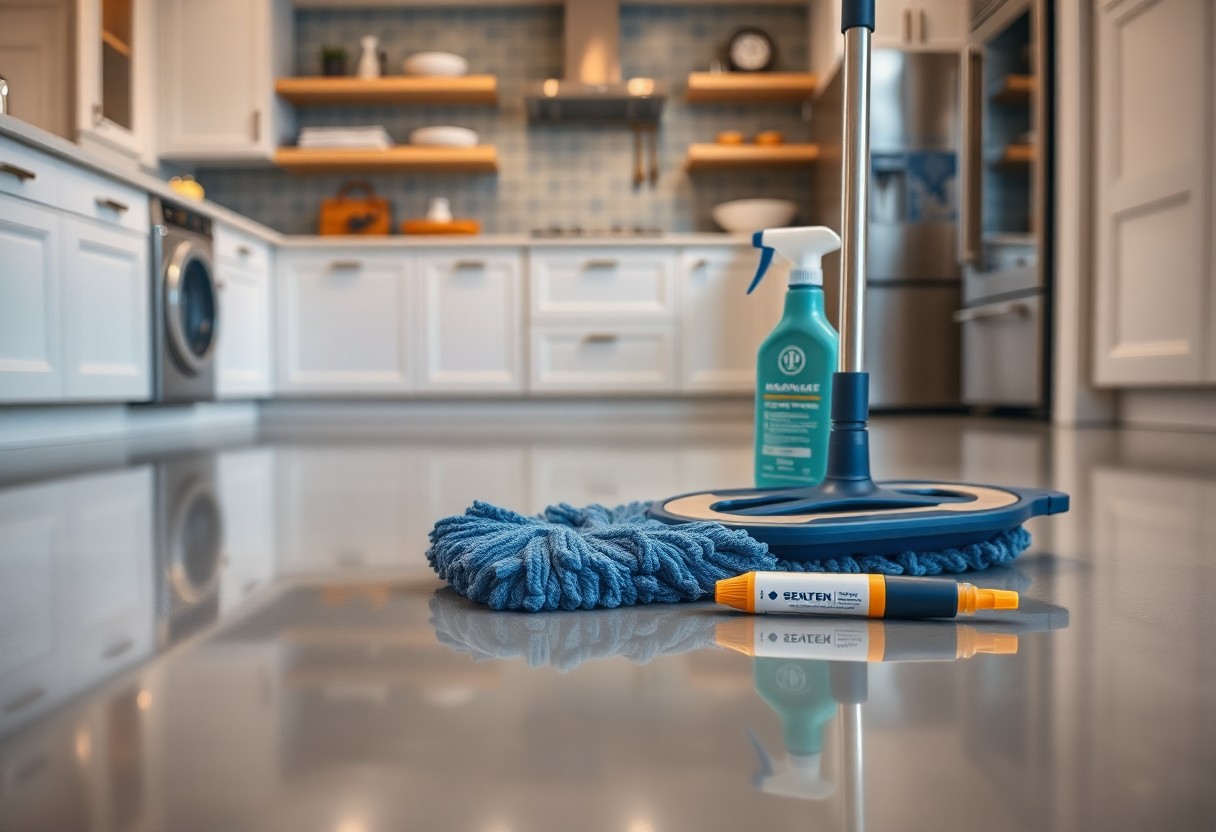
Maintenance Myths Debunked: Keeping Your Vinyl Floor in Top Shape
Despite its popularity, vinyl flooring is often surrounded by misconceptions that can affect its care and maintenance. Many believe that this type of flooring requires endless upkeep or specialized cleaning products, but this simply isn’t true. Understanding how to properly maintain your vinyl floors will ensure they remain beautiful and functional for years to come, minimizing the need for costly repairs or replacements.
Common Misconceptions About Care and Cleaning
One widespread myth is that you should use abrasive cleaners to tackle stubborn stains, which can actually harm the surface of your vinyl. Additionally, some homeowners assume that all-purpose cleaners are safe for any vinyl type, overlooking specific manufacturer recommendations. It’s best to avoid these common pitfalls and stick to products that are designed specifically for vinyl flooring.
Essential Tips for Longevity and Appearance
To keep your vinyl floors looking fresh, it’s important to establish a straightforward cleaning routine. Regular sweeping or vacuuming will prevent dirt buildup, while mopping with a gentle, pH-neutral cleaner can eliminate grime without damaging the finish. Protecting your floors from scratches and scuffs also extends their life, so consider using furniture pads and area rugs in high-traffic zones.
- Use a soft-bristled broom or vacuum without a beater bar for daily cleaning.
- Mop with warm water and a vinyl-safe cleaner weekly to avoid residue buildup.
- Protect against scratches by using furniture pads under legs and keeping pet claws trimmed.
- Assume that occasional deep cleaning with an appropriate product will rejuvenate your vinyl floor’s finish.
Incorporating these important tips into your cleaning regimen pays off significantly. Maintaining a consistent schedule not only prevents debris buildup but also enhances the overall lifespan of your flooring. Opting for a damp mop instead of soaking your vinyl reduces the risk of moisture seeping between seams. Always dry the floor with a clean cloth after mopping to prevent streaks and promote shine.
- Adopt a no-shoes policy indoors to reduce dirt and grit exposure.
- Wipe up spills immediately to prevent staining and warping.
- Rotate area rugs to avoid uneven wear and fading from sunlight.
- Assume that periodic professional cleaning can also breathe new life into your vinyl flooring after years of wear.
To wrap up
So, before you make your next vinyl flooring purchase, assess your space, consider your lifestyle needs, and understand your budget. Explore different styles, textures, and installation methods to find the perfect match for your home. Don’t hesitate to ask questions and gather samples to ensure you make an informed choice. With the right preparation, you’ll create a beautiful, durable, and cost-effective flooring solution that enhances your living space for years to come.


